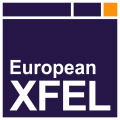 XFEL is a special short-pulse, high-luminosity X-ray source, which is fundamental to the examination and definition of material transformation dynamics. Specialised X-rays allow scientists to map the atomic structure of viruses, study chemical reactions and investigate processes inside planets.
XFEL is a special short-pulse, high-luminosity X-ray source, which is fundamental to the examination and definition of material transformation dynamics. Specialised X-rays allow scientists to map the atomic structure of viruses, study chemical reactions and investigate processes inside planets.
XFEL is Europe’s first and the world’s largest operational hard X-ray free-electron laser.
The infrastructure operates as a non-profit limited liability company under German law (GmbH), in the framework of a long-term cooperation with the research centre DESY (Deutsches Elektronen-Synchrotron, Hamburg).
Its membership entitles Hungary to a 1% share in the company.
| Short name | European XFEL |
| Name | European X-Ray Free-Electron Laser Facility |
| Official website | www.xfel.eu |
| Year of foundation | 2009 |
| ESFRI project/landmark | landmark |
| Number of member countries | 12 |
| Headquarters | Schenefeld, Germany |
| Participating countries | Denmark, France, Germany, Hungary, Italy, Poland, Russia, Slovakia, Spain (associate), Sweden, Switzerland, UK |
| Hungary’s accession | 2009 |
| Partner institutions in Hungary | Wigner Research Centre for Physics |
| Public administration representative |
Dr. András Siegler National Research, Development and Innovation Office 1077 Budapest, Kéthly Anna tér 1. Email: andras.siegler@nkfih.gov.hu |
| Professional representative | György Vankó, Wigner Research Centre for Physics |
| Membership payments | 2015: EUR 2,176,989 (≈ HUF 679.5 million) 2016: EUR 2,220,750 (≈ HUF 691.4 million) 2017: EUR 1,586,374 (≈ HUF 491 million) 2018: EUR 1,121,245 (≈ HUF 358.7 million) 2019: EUR 1,121,245 (≈ HUF 392.4 million) 2020: EUR 1,255,208 (≈ HUF 439.3 million) |
Benefits of the membership for Hungary
- Access for Hungarian researchers to internationally leading, costly large research equipment.
- Tests and experiments can be performed to the extent of allocated beam time.
- Potential ground-breaking new knowledge in the following areas:
- 1. ultrafast structural and electron dynamics in atoms, molecules, solutions and nano materials;
- 2. properties of high-energy density matters;
- 3. static structure and transformations of biomolecules and complex biological systems. The resulting new technologies are expected to have substantial industrial as well as social impact in the fields of health, transport, communication, energy and sustainability.
- 1. ultrafast structural and electron dynamics in atoms, molecules, solutions and nano materials;
- Options for contribution in kind.
- Potential industrial supplies for the operation.
The 6 measuring stations of the research infrastructure have gradually become operational since September 2017, and the first assessment of the research utilisation of the facility was completed in October 2019. Based on the average for the years 2018-2019, Hungary uses 82% of its researcher capacities at partial operation.
- Between 2017-2019, 4 Hungarians worked at XFEL, 3 from the Wigner Research Centre for Physics (FK) and 1 from ELI-ALPS
- In 2017-2019, 1 postdoctoral researcher from ELI-ALPS carried out measurements on the FXE equipment.
- In 2017-2019, 1 PhD student from Wigner FK participated in XFEL research.
- Hungarian researchers have so far used FXE and SPB/SFX equipment.






